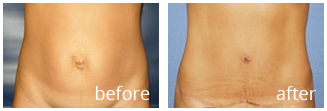Let's Keep in Touch
Sign up now for our email list and you'll get first dibs on the latest news and special offers from Dr.Perry Jr. Rest assured, we never share your email info.Breast Reconstruction
Breast reconstruction is the rebuilding of a breast that has been removed due to cancer or other diseases. This procedure involves the use of implants or relocated flaps of the patients own tissue to create a natural looking breast and reformation of a natural looking areola and nipple. The reconstruction is possible immediately following breast removal. But in individuals with medical problems like high blood pressure, obesity, diabetes and also in individuals who smoke The surgery is delayed as they are considered high risk candidates. Breast reconstruction usually takes multiple operations, which are spread out over weeks or months.
Risks involved:
- Bleeding, fluid collection, excessive scar tissue, complications with anesthesia can occur but are relatively uncommon.
- Smokers should be advised that nicotine can delay healing, resulting in conspicuous scars and prolonged recovery.
- In rare cases, due to infection, the implants may be removed and new implants inserted again after the infection clears.
- Capsular contracture occurs if the scar around the implants begins to tighten and cause the breast to feel hard.
Reconstruction does not generally interfere with chemotherapy or radiation treatment should cancer reoccur.
There are many methods of breast reconstruction. The two most common are:
- Tissue expander-breast implants: this is the most common technique used world wide. The plastic surgeon inserts a tissue expander ( a temporary silastic implant), beneath the pectoralis major muscle of the chest wall and over weeks or months, inject a saline solution to slowly expand the over laying tissue. Once the expander has reached an acceptable size it may be removed and replaced with a more permanent implant. Reconstruction of the areola and nipple are performed in a separate operation after the skin has stretched to its final size.
- Flap reconstruction: the second most common procedure is using tissue from other parts of patient’s body, such as back, buttocks, thigh or abdomen.
- The latissimus dor muscle flap: is the donor tissue on the back. It is a large flat muscle which can be used without loss of function. This flap is usually used to recruit soft-tissue coverage over an underlying implant.
- Abdominal flaps: the abdominal flap for breast reconstructionn the umbilicus and the pubis is used. It provides enough tissue to reconstruct moderate to large breasts. The contour of the lower abdomen is improved by this procedure. TRAM flap procedure may weaken the abdominal muscles, but are tolerated well in most patients.
- Nipple and areola reconstruction:
- Nipple areola graft: if the contralateral breast has not been constructed and the nipple and areola are sufficiently large, tissue may be harvested and used to recreate the nipple-areolar complex. Cosmetic result can be achieved using tattoos.
- Local tissue flaps: a nipple may be created by raising a small flap in the target area and producing a raised mound of skin. To create an areola, a circular incision may be made around the new nipple and sutured back on. The nipple and areolar region may then be tattooed to produce a realistic color match with the contralateral breast.
Recovery:
Recovery from implant based reconstruction is faster than with flap-based reconstruction, but both take at least three to six weeks to recover and both require follow up surgeries in order to construct a new areola and nipple. The patient should avoid active sports, over head lifting and sexual activity during recovery period. TRAM flap patients can result in abdominal muscle weakness but most patients resume normal activities after recovery.


